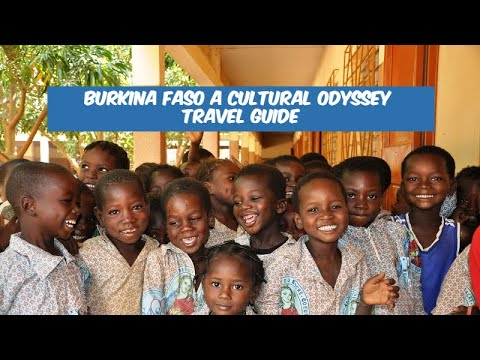
Burkina Faso, landlocked deep within the knots of West Africa, remains a destination ripe with cultural richness and historic allure. Known for its eclectic festivals, traditional crafts, and vibrant music scenes, this country offers an odyssey through ancient customs and contemporary expressions that paint a picture of Africa often unseen by the typical traveler. This travel guide will explore the key destinations, cultural experiences, and practical tips to help you embark on your own adventure through Burkina Faso.
#### Key Destinations
**Ouagadougou**
The bustling capital city, Ouagadougou (or simply Ouaga), serves as the ideal starting point for your journey. The city is known for its lively markets and cultural festivals. Be sure to visit the Grand Marché for local handicrafts and fabrics — perfect souvenirs imbued with Burkinabé essence. The National Museum offers insightful exhibits into the ethnography and history of Burkina Faso.
**Bobo-Dioulasso**
Bobo-Dioulasso, the country’s second-largest city, is considered its cultural heartbeat. The old quarter of Kibidwe is home to craftsmen specializing in musical instruments like balafons (African xylophones). Don’t miss the Grand Mosque built in Sudano-Sahelian architectural style or the atmospheric streets of Old Bobo.
**Banfora**
Renowned for its stunning natural beauty, Banfora features cascading waterfalls and sandstone domes. The Karfiguela Falls and Sindou Peaks are must-visit spots for nature lovers. Nearby Lake Tengrela offers peaceful canoe rides and opportunities to spot hippos in their natural habitat.
#### Cultural Experiences
**Festivals**
Burkina Faso’s festival calendar is brimming with events that celebrate art, music, film, and traditional religions. The biennial FESPACO (Panafrican Film and Television Festival of Ouagadougou) has been celebrated since 1969 and attracts filmmakers from across Africa. Another significant event is SIAO (International Art and Craft Fair), one of Africa’s most important handicraft fairs.
**Music & Dance**
Music plays a central role in Burkinabé life; it transcends mere entertainment by weaving into the social fabric through ceremonies and daily life. Traditional instruments such as djembes (drums) characterize gripping performances that often tell stories or impart wisdom.
**Cuisine**
Sampling local dishes like ‘tô’ (a jelly-like millet dish served with okra sauce) provides another layer to understanding Burkina’s culture. Beverages such as ‘bissap’ juice made from hibiscus flowers offer refreshing insights into local tastes.
#### Practical Tips
**Travel Safety**
Security considerations are paramount when traveling within certain regions due to political instability in parts of Burkina Faso. Always consult travel advisories from reliable sources before planning your trip.
**Best Time to Visit**
The best time to visit Burkina Faso is during the dry season from October to December when temperatures are cooler and roads more navigable after the rainy season floods recede.
**Language Barrier**
French is the official language; however local languages such as Mooré predominate in everyday conversation. Learning basic French phrases or hiring a local guide can enrich interactions with locals.
In conclusion, a trip to Burkina Faso is indeed a compelling cultural odyssey that introduces travelers to captivating rituals, artistic expressions rooted in history, spirited music scenes, vibrant cities imbued with West African charm – all while offering profound insights into resiliency ingrained within its communities. By immersing yourself fully into this unique tapestry woven by tradition and modernity alike you stand not only to discover Burkina Faso but also gain broader perspectives on African culture itself.
